
The white wagtail is a small passerine bird in the family Motacillidae, which also includes pipits and longclaws. The species breeds in much of Europe and the Asian Palearctic and parts of North Africa. It has a toehold in Alaska as a scarce breeder. It is resident in the mildest parts of its range, but otherwise migrates to Africa. In Ireland and Great Britain, the darker subspecies, the pied wagtail or water wagtail predominates; this is also called in Ireland willie wagtail, not to be confused with the Australian species Rhipidura leucophrys which bears the same common name. In total, there are between 9 and 11 subspecies of M. alba.
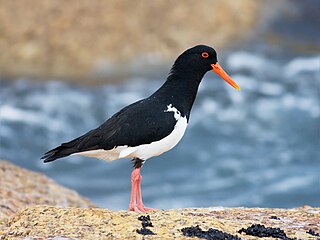
The oystercatchers are a group of waders forming the family Haematopodidae, which has a single genus, Haematopus. They are found on coasts worldwide apart from the polar regions and some tropical regions of Africa and South East Asia. The exceptions to this are the Eurasian oystercatcher, the South Island oystercatcher, and the Magellanic oystercatcher, which also breed inland, far inland in some cases. In the past there has been a great deal of confusion as to the species limits, with discrete populations of all black oystercatchers being afforded specific status but pied oystercatchers being considered one single species.

The willow warbler is a very common and widespread leaf warbler which breeds throughout northern and temperate Europe and the Palearctic, from Ireland east to the Anadyr River basin in eastern Siberia. It is strongly migratory, with almost all of the population wintering in sub-Saharan Africa.
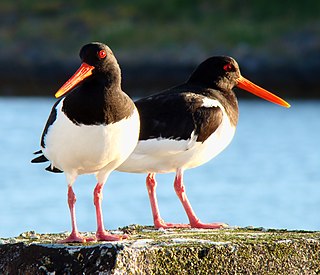
The Eurasian oystercatcher also known as the common pied oystercatcher, or just oystercatcher, is a wader in the oystercatcher bird family Haematopodidae. It has striking black and white plumage, a long straight orange-red bill, red eyes and relatively short dull pink legs. The sexes are similar in appearance but the bill of the female is longer than that of the male.
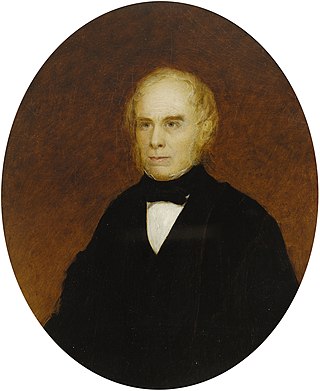
William MacGillivray FRSE was a Scottish naturalist and ornithologist.

William Yarrell was an English zoologist, prolific writer, bookseller and naturalist admired by his contemporaries for his precise scientific work.

Thomas Say was an American entomologist, conchologist, and herpetologist. His studies of insects and shells, numerous contributions to scientific journals, and scientific expeditions to Florida, Georgia, the Rocky Mountains, Mexico, and elsewhere made him an internationally known naturalist. Say has been called the father of American descriptive entomology and American conchology. He served as librarian for the Academy of Natural Sciences of Philadelphia, curator at the American Philosophical Society, and professor of natural history at the University of Pennsylvania.

Sir John Richardson FRS FRSE was a Scottish naval surgeon, naturalist and Arctic explorer.
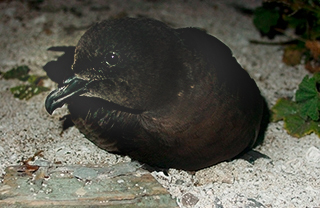
Bulweria is a genus of seabirds in the family Procellariidae named after English naturalist James Bulwer. The genus has two extant species, Bulwer's petrel and Jouanin's petrel. A third species, the Olson's petrel, became extinct in the early 16th century; it is known only from skeletal remains. Bulwer's petrel ranges in the Atlantic, Indian and Pacific Oceans, whereas Joaunin's petrel is confined to the northwestern Indian Ocean. Olson's petrel is known from the Atlantic.

Alexander Segger George is an Australian botanist. He is an authority on the plant genera Banksia and Dryandra. The "bizarre" Restionaceae genus Alexgeorgea was named in his honour in 1976.

The yellow-faced siskin is a species of finch in the family Fringillidae. It is found in Brazil and Venezuela.

The Chilean woodstar is a Critically Endangered species of hummingbird in tribe Mellisugini of subfamily Trochilinae, the "bee hummingbirds". It is the only species placed in the genus Eulidia. It is endemic to Chile though there are unconfirmed reports from southern Peru. The species' name commemorates the English naturalist William Yarrell.

Pytilia is a genus of small brightly coloured seed-eating birds in the family Estrildidae. They are distributed across Africa.
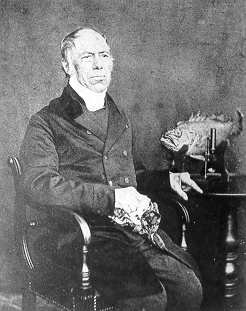
Jonathan Couch was a British naturalist, the only child of Richard and Philippa Couch, of a family long resident at Polperro, a small fishing village between Looe and Fowey, on the south coast of Cornwall. A blue plaque on the wall of Warren cottage commemorates his birthplace.

The stareye lightfish is a species in the monotypic genus of Pollichthys. They are small stomiiform fishes found in oceans throughout the world. The maximum length is 6 cm.

Bagarius yarrelli, also known as the giant devil catfish or goonch, is a very large species of catfish in the genus Bagarius found in rivers in the Indian subcontinent. The species reaches up to 2 m (6.6 ft) in length. It may be synonymous with B. bagarius.
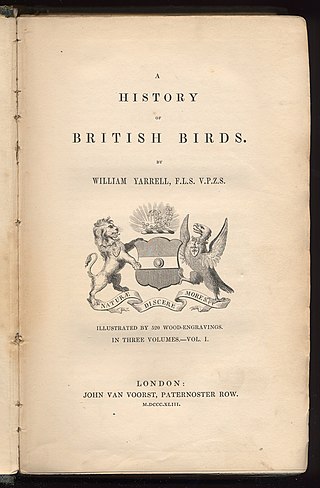
William Yarrell's A History of British Birds was first published as a whole in three volumes in 1843, having been serialised, three sheets every two months, over the previous six years. It is not a history of ornithology but a natural history, a handbook or field guide systematically describing every species of bird known to occur in Britain. A separate article of about six pages, containing an image, a description, and an account of worldwide distribution, together with reports of behaviour, is provided for each species.

Chirolophis ascanii, or Yarrell's blenny, is a species of fish belonging to the family Stichaeidae. It is native to Northern European coasts. It was named for the English naturalist William Yarrell.

A History of British Fishes is a natural history book by William Yarrell, serialised in nineteen parts from 1835, and then published bound in two volumes in 1836. It is a handbook or field guide systematically describing every type of fish found in the British Isles, with an article for each species.
Laemonema yarrellii, the codling, is a deep sea morid cod from Madeira and the Great Meteor Seamount of the North Atlantic. It was named for the English naturalist William Yarrell.



















